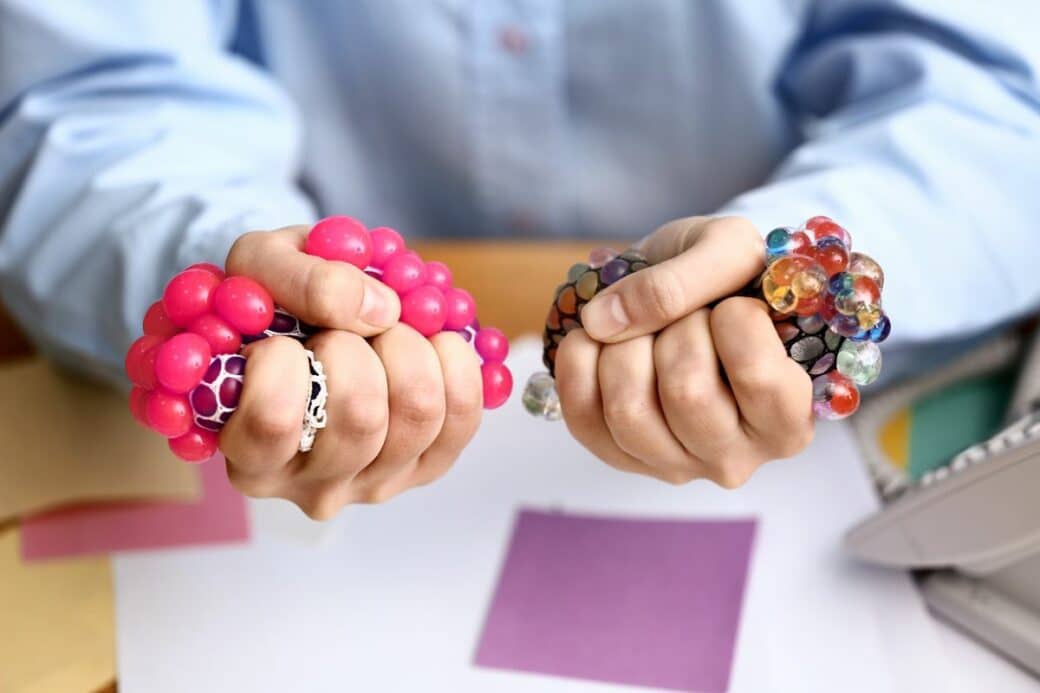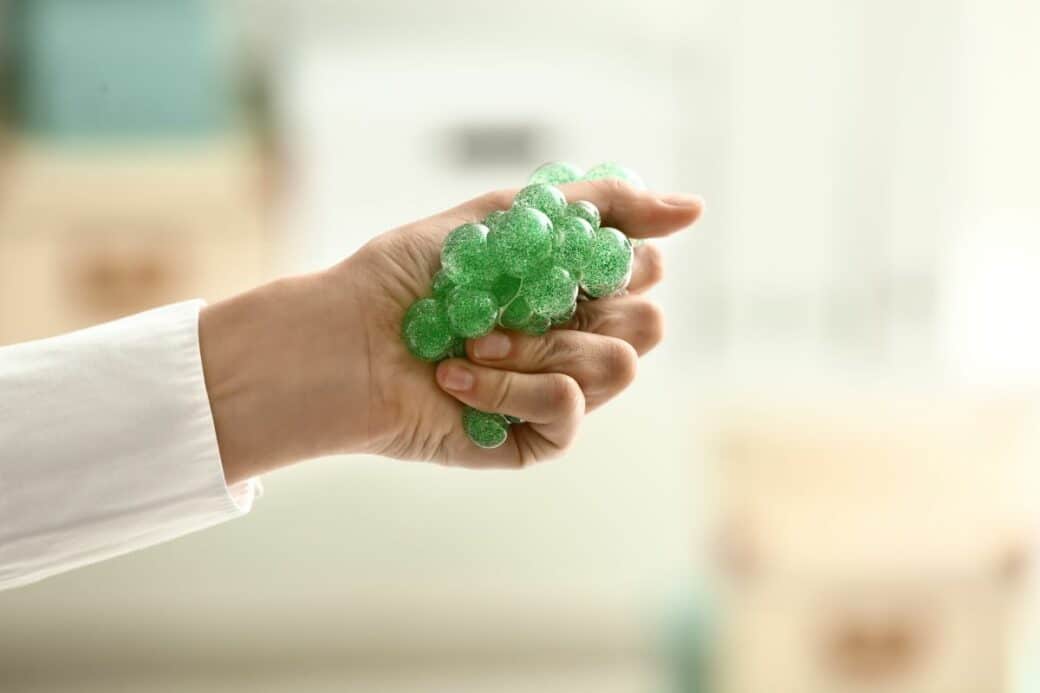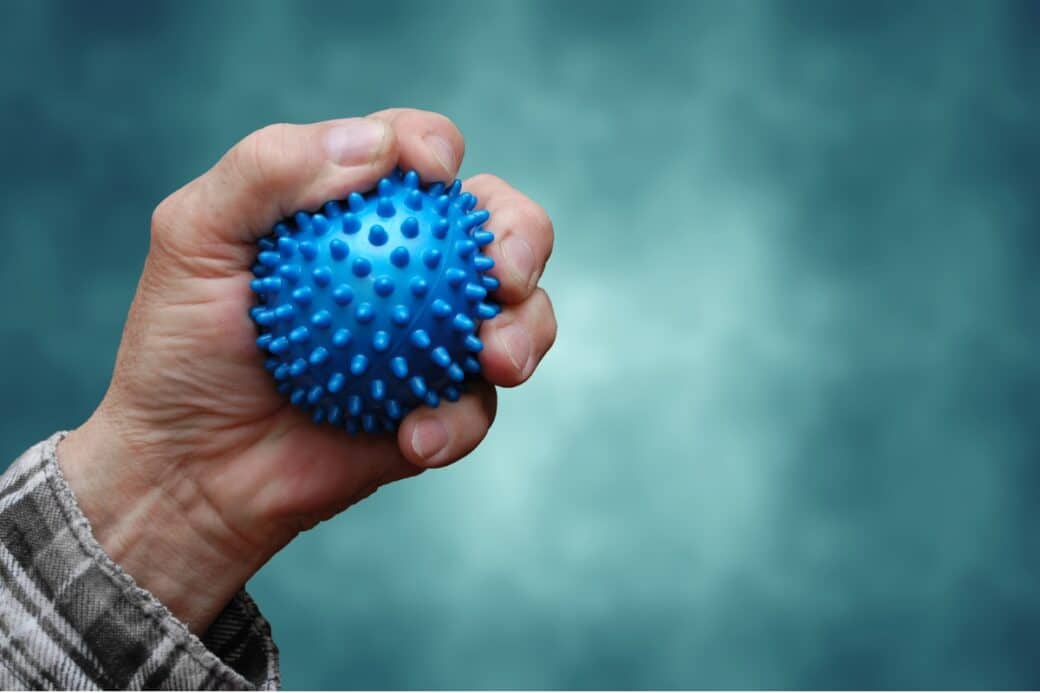Are you tired of your stress balls losing their firmness and becoming squishy? In this article, you will uncover the mystery of why stress balls deflate. We will explore the scientific reasons behind this common occurrence and provide you with tips on how to prevent it. So grab your stress ball and get ready to solve the puzzle!

Why Do Stress Balls Deflate: Understanding Stress Balls
What are stress balls?
Stress balls are small, squeezable objects designed to help relieve stress and promote relaxation. They are typically made of a soft, pliable material and can be easily manipulated with one hand. Stress balls are often used as a form of stress relief or for therapeutic purposes, as they provide a physical outlet for tension and anxiety. They come in various shapes, sizes, and materials, allowing individuals to find the perfect stress ball that suits their needs and preferences.
Different types of stress balls
There is a wide range of stress balls available on the market, each offering unique features and benefits. The most common types include foam stress balls, gel-filled stress balls, and liquid-filled stress balls. Foam stress balls are lightweight and provide a soft, squishy texture, making them ideal for stress and hand exercises. Gel-filled stress balls offer a slightly firmer texture and provide a cooling sensation when squeezed. Liquid-filled stress balls have a more fluid feel and can be visually appealing with the colorful liquid and floating objects inside. With such diverse options, you can easily find a stress ball that suits your personal preferences and sensory needs.
Typical uses for stress balls
Stress balls have gained popularity for their potential to alleviate stress and improve focus. They can be used in various situations, whether it’s at home, at work, or during a long commute. Many people use stress balls as a way to release pent-up energy or tension, as repetitive squeezing can help loosen tight muscles and promote relaxation. Stress balls can also be beneficial for improving hand strength and dexterity, making them popular among individuals recovering from hand injuries or those who engage in repetitive hand movements. Additionally, stress balls can serve as a simple tool for stress management by providing a physical outlet for stress and anxiety during moments of high pressure or intense emotions.
The Structure of Stress Balls

Material composition
Stress balls are typically made from a variety of materials, with the most common being foam, rubber, or thermoplastic elastomer (TPE). Foam stress balls are constructed from a polyurethane foam material, which is soft, lightweight, and easily squeezable. Rubber stress balls offer a more durable and resilient option, as they are made from natural or synthetic rubber compounds. TPE stress balls provide a combination of the benefits of foam and rubber, offering a soft yet resilient texture that can withstand repeated squeezing. The choice of material affects both the feel and durability of the stress ball, so it’s important to consider your preferences when selecting a stress ball.
Inner contents
Stress balls often contain various types of fillings or inclusions that contribute to their unique properties. Foam stress balls are usually solid throughout, with the foam material providing the necessary resilience and bounce when squeezed. Gel-filled stress balls, as the name suggests, are filled with a gel substance that adds weight and texture to the ball. This gel can provide a soothing, massaging sensation when squeezed. Liquid-filled stress balls contain a liquid or semi-liquid substance, often mixed with glitter or small floating objects, which creates an engaging visual experience when manipulated. The inner contents of a stress ball play a vital role in its overall feel and sensory experience.
How they’re made
The manufacturing process of stress balls typically involves molding or shaping the chosen material into the desired form. For foam stress balls, polyurethane foam is poured into molds and allowed to expand and cure, resulting in a solid foam ball. Rubber stress balls are made by combining rubber compounds and pouring the mixture into molds, which are then heated and cured to form the final product. TPE stress balls are manufactured using a similar process to rubber stress balls, as TPE is a type of rubber-like material. Once the stress ball is formed, it can be finished with any desired texture or design, such as adding bumps or ridges for enhanced sensory stimulation. The manufacturing process ensures that stress balls are ready for use right out of the packaging, allowing individuals to immediately experience stress relief.
The Problem: Stress Ball Deflation
Signs of a deflated stress ball
One of the primary issues that stress ball users may encounter is deflation. A deflated stress ball may appear squished, misshapen, or significantly smaller than its original form. The loss of firmness and lack of resilience are clear indicators of a deflated stress ball. Additionally, if the stress ball is filled with liquid or gel, any leaks or ruptures in the ball’s surface can cause the contents to leak out, resulting in further deflation.
How often does deflation occur?
The frequency of stress ball deflation can vary depending on factors such as the quality of the stress ball, the amount of use, and the level of pressure applied. Lower-quality stress balls or those made with thinner materials may be more prone to deflation over time. On the other hand, stress balls made from high-quality materials and designed for durability may last longer before experiencing deflation. The frequency of deflation is also influenced by individual usage habits and the amount of pressure exerted on the stress ball during squeezing. Regular use and high-pressure squeezing can accelerate the occurrence of deflation.
Why is deflation problematic?
Deflation of stress balls can be problematic for several reasons. Firstly, a deflated stress ball may not provide the same level of stress relief and sensory stimulation as an inflated one. The loss of firmness and texture can diminish the effectiveness of using a stress ball as a stress management tool. Furthermore, if the stress ball contains liquid or gel, any leaks or ruptures can create a mess and potentially damage surrounding objects or surfaces. Additionally, a deflated stress ball may not retain its original shape and may become less visually appealing. Ultimately, deflation reduces the overall lifespan and usefulness of a stress ball, requiring individuals to replace or repair their stress balls more frequently.
Exploring the Causes of Stress Ball Deflation
Wear and tear
Like any other object subject to repetitive use, stress balls are susceptible to wear and tear over time. The constant squeezing and manipulation weaken the material, making it more prone to deflation. Common signs of wear and tear include small cracks or breaks on the surface of the stress ball, which can eventually lead to leaks and deflation. To minimize wear and tear, it is important to use the stress ball as intended and avoid excessive force or rough handling.
Excessive squeezing
While stress balls are designed to withstand repetitive squeezing, excessive force or overuse can lead to deflation. Applying excessive pressure to the stress ball causes the walls of the ball to stretch beyond their limits, resulting in deformations or ruptures. It is essential to find a balance between using the stress ball to relieve stress and not exerting excessive pressure that could cause damage.
Temperature changes
Temperature fluctuations can also contribute to stress ball deflation. Extreme heat or cold can affect the elasticity and stability of the stress ball’s material. Exposing the stress ball to high temperatures, such as leaving it in direct sunlight or placing it near a heat source, can cause the material to soften or melt, leading to deflation. Likewise, exposing the stress ball to freezing temperatures can make the material brittle and prone to cracking, resulting in deflation. It is advisable to store stress balls in a cool, dry place away from heat sources to maintain their integrity.
Quality of material and construct
The quality of the material and the overall construction of the stress ball play a significant role in its resistance to deflation. Stress balls made from inferior or substandard materials may have thin walls or weak seams, making them more susceptible to deflation. On the other hand, stress balls made from high-quality materials and constructed with care and precision are more likely to withstand the rigors of frequent use and maintain their shape and firmness over time.
Role of Pressure in Stress Ball Deflation
Pressure exerted over time
The pressure exerted on a stress ball during squeezing can contribute to its deflation. While stress balls are designed to withstand repeated squeezing, the continuous application of pressure over time can cause the material to compress and lose its original shape. The inner fillings, such as foam, gel, or liquid, may also gradually lose their volume and resilience under constant pressure, leading to deflation. Regular breaks and allowing the stress ball to regain its shape after each squeezing session can help alleviate the effects of long-term pressure.
Excessive pressure causing leaks
Applying excessive pressure to a stress ball can result in leaks and subsequent deflation. When the walls of the stress ball are stretched beyond their limits, small cracks or ruptures may occur. If the stress ball contains liquid or gel, this can lead to leaks and a gradual loss of filling, causing deflation. To avoid excessive pressure and potential leaks, it is important to squeeze the stress ball within a comfortable range without straining the material.
Variations in pressure causing damage
Inconsistent or irregular pressure applied to a stress ball can also contribute to deflation. Frequently changing the intensity or force of squeezing can cause the material to weaken or deform over time, making it more susceptible to deflation. A consistent and controlled squeezing technique, along with regular breaks for the stress ball to regain its shape, can help maintain its structural integrity and prolong its lifespan.
Impact of Material on Deflation
Comparison of different materials
The choice of material in a stress ball significantly impacts its susceptibility to deflation. Foam stress balls, although soft and pliable, may be more prone to deflation as the foam material can break down or lose its elasticity over time. Rubber stress balls, particularly those made from high-quality rubber compounds, tend to be more durable and less likely to deflate. TPE stress balls offer a balance between the softness of foam and the durability of rubber, making them a reliable option for those concerned about deflation.
Durability of materials
When considering the durability of stress ball materials, factors such as resilience, elasticity, and resistance to wear and tear come into play. Foam stress balls, while providing a satisfying squishy feel, may wear out faster due to the inherent nature of foam. Rubber stress balls, on the other hand, offer greater durability and resilience, making them less prone to deflation. TPE stress balls, with their combination of foam-like softness and rubber-like durability, strike a balance between the two materials and can withstand a moderate level of wear and tear.
How various materials respond to stress
Each stress ball material behaves differently under stress, which can affect its susceptibility to deflation. Foam stress balls tend to compress and quickly regain their shape, making them more prone to deflation over time. Rubber stress balls, with their higher elasticity and resilience, retain their shape and firmness even with repeated squeezing, reducing the likelihood of deflation. TPE stress balls exhibit a similar behavior to rubber, offering good resistance to deflation due to their ability to bounce back and maintain their form. Considering the stress ball material and its response to stress can help individuals make an informed choice to avoid deflation.
Influence of Inside Filling on Deflation
Different types of filling
The inside filling of a stress ball can greatly impact its susceptibility to deflation. Foam stress balls typically have a solid foam filling, which provides stability and a consistent shape. Gel-filled stress balls contain a gel substance that adds weight and texture, making them less likely to deflate. Liquid-filled stress balls, with their liquid or semi-liquid fillings, tend to be more prone to leaks and deflation if the ball’s surface is compromised.
The behavior of different fillings under stress
The behavior of different fillings inside stress balls can affect their vulnerability to deflation. Foam fillings, being solid and resilient, resist deformation and maintain the ball’s shape over time. Gel-filled stress balls, with their slightly more viscous filling, retain their volume and texture even with repeated squeezing. However, gel-filled stress balls can still be subject to leaks or deflation if the outer shell is damaged. Liquid-filled stress balls are the most susceptible to deflation as the liquid or semi-liquid filling can easily leak out if the ball’s surface integrity is compromised.
Leakage of fillings causing deflation
A major concern with stress balls is the potential for leaks, which can lead to deflation. If a stress ball is punctured or the surface becomes damaged, the filling may leak out gradually, resulting in deflation. Foam-filled stress balls may not experience leakage unless the outer material is compromised, while gel-filled stress balls may leak if the membrane or seal is broken. Liquid-filled stress balls are particularly vulnerable to deflation if the ball sustains any damage. To prevent leaks and subsequent deflation, it is important to handle stress balls with care and avoid exposing them to sharp objects or rough surfaces.
Methods to Detect Deflation
Visual clues
Visual inspection is one of the easiest ways to determine if a stress ball is deflated. Look for signs of deformation, loss of shape, or visible cracks on the surface. If the stress ball appears smaller or less firm than before, it is likely deflated. Additionally, if a liquid-filled stress ball shows signs of leaking, such as fluid stains or a change in the ball’s appearance, it may be deflated.
Feeling the deflation
By squeezing and manipulating the stress ball, you can assess its firmness and resilience. A deflated stress ball will feel significantly softer and less resistant to pressure compared to an inflated one. If the stress ball no longer provides the expected level of resistance or tactile feedback, it may be deflated.
Comparing with a perfectly inflated ball
If you have access to a new or properly inflated stress ball of the same model, comparing it with the one in question can help identify deflation. By squeezing both stress balls side by side, you can observe any noticeable differences in firmness, shape, or texture. If the stress ball being tested lacks the same level of resistance or feels less solid compared to the reference ball, it is likely deflated.
Preventing Deflation in Stress Balls
Proper usage guidance
To prevent deflation, it is essential to use stress balls properly. Avoid applying excessive force or squeezing the stress ball beyond its limits, as this can damage the material and cause deflation. Use the stress ball within a comfortable range of pressure and take breaks between squeezing sessions to allow the ball to regain its shape and resilience. Additionally, avoid exposing the stress ball to extreme temperatures, sharp objects, or rough surfaces that could potentially puncture or damage the outer material.
Maintaining the stress ball
Regular maintenance can help prolong the lifespan of a stress ball and minimize the risk of deflation. Clean the stress ball periodically using a mild soap and water solution to remove any dirt or debris that may accumulate on its surface. Avoid using harsh chemicals or abrasive cleaners that could damage the material. Store the stress ball in a cool, dry place away from direct sunlight or heat sources to maintain its integrity and prevent potential deflation due to temperature changes.
Choosing the right stress ball
Selecting a high-quality stress ball made from durable materials can significantly reduce the likelihood of deflation. Research different stress ball models and manufacturers to find reputable brands known for producing long-lasting and resilient products. Consider the material and filling of the stress ball, as well as customer reviews and recommendations, to choose a stress ball that best suits your needs and offers a lower risk of deflation. Investing in a well-made stress ball upfront can save you from the frustration and inconvenience of frequent replacements due to deflation.
Mitigation: How to Fix a Deflated Stress Ball
Temporary fixes for deflated stress balls
In some cases, it is possible to temporarily restore a deflated stress ball to its original form. For foam-filled stress balls, adding a small amount of air by using an inflation device or blowing into a tiny hole can help reinflate the ball. However, it’s important to note that this fix may only provide temporary relief, as the foam material may have already lost some of its elasticity and resilience. For liquid or gel-filled stress balls, repairing leakage or punctures can be challenging and may require professional assistance. Temporary fixes are typically limited, and it may be more beneficial to consider replacing the deflated stress ball.
When to replace your stress ball
While temporary fixes can provide a quick solution, it is important to know when it’s time to replace your stress ball. If the stress ball is significantly deflated, shows signs of irreversible damage or leakage, or fails to provide the desired tactile feedback or stress relief, it may be time for a replacement. Additionally, if attempts to temporarily fix the stress ball prove unsuccessful or the ball’s structural integrity continues to deteriorate, it is advisable to purchase a new stress ball to ensure optimal stress relief and functionality.
How to properly dispose of a deflated stress ball
When disposing of a deflated stress ball, it is important to consider the materials used and their impact on the environment. Foam stress balls, which are typically made from polyurethane foam, can often be recycled through specialized foam recycling programs or facilities. Rubber or TPE stress balls can also be recycled through appropriate recycling channels. It is important to check with local recycling centers or waste management facilities to determine the proper disposal method based on the specific materials of your deflated stress ball. If recycling is not an option, the stress ball can be disposed of with regular household waste, being mindful of any local regulations regarding the disposal of plastics or synthetic materials.




